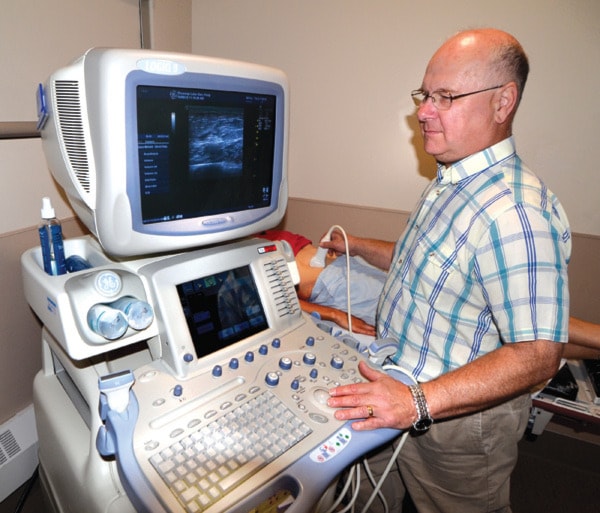The Oxford Dictionary describes the word urgent as: “needing immediate attention, action or decision.”
But in terms of getting an ultrasound, Shuswap resident Shannon Gallivan discovered that the wait list for urgent cases is at least four weeks anywhere in Interior Health.
“After my mother received her requisition from her physician July, 31 she had called the West Kelowna imaging to find that they are booking ‘urgent’ ultrasounds into the end of September/October…” she says. “After a few calls to all Interior imaging departments the answer was the same across the board, with the earliest appointment being available in Salmon Arm towards the end of August/September.”
Shuswap Lake Hospital radiologist John Wickert says the primary cause of the long waits is a shortage of qualified technologists.
“Two things have happened – they (the province) haven’t trained enough techs and lots of old techs are retiring with no one to backfill the positions,” Wickert says, noting longtime local ultrasonographer Ron Lawrence retired several months ago, leaving a finally acquired third machine sitting idle. “The other problem is a province across the mountains pays a heckuva lot better.”
The good news for Salmon Arm is that a new ultrasonographer will be arriving at the end of August.
As well, Wickert says if a doctor believes his patient needs to be seen within a certain number of hours, Shuswap Lake imaging department will work it out.
“But it has to be doctor-to-doctor,” he says of the requisition. “If there is a true reason the doctor wants us to see them, we’ll accommodate them.”
Dan Fitch, head of diagnostic imaging for Interior Health’s Thomson-Cariboo Shuswap region, says the issue Canada-wide is more complex than rates of pay.
He says the health region is going to do its best to attract techs by attending job recruiting fairs, highlighting lifestyle choice and “being creative with scheduling.”
Another factor compounding program is that BCIT switched to a direct entry program, says Fitch.
Prior to that, people who were already X-ray technicians or other medical professionals, could be certified following a nine-month course.
The new program is two-and-a-half years and the first graduates from this extended program are just emerging.
In the meantime, Fitch suggests patients can get ultrasounds at privately owned but publicly funded clinics in Vernon or Kamloops – clinics, he says that don’t have to accommodate hospital wards or emergency rooms.
But Gallivan, who called the Vernon clinic last Thursday, was told the earliest available appointment for those on the urgent list is Oct. 3.
As well, Gallivan questions the validity of cutting the nine-month course entirely.
She argues the training course for medical personnel should remain open to qualified people in the same way LPNs are able to transfer into nursing.
“Why are we cutting programs in areas that are in high demand, making it harder to get?”
She also takes issue with IH’s attempts to attract more qualified ultrasonographer.
“If you ask me, they’re not doing anything to correct the problem,” she says, noting there are only nine job postings on Interior Health’s website, none of them for an ultrasonographer. “If I am an ultrasound technician in another province, how do I even know when there’s a position?”
